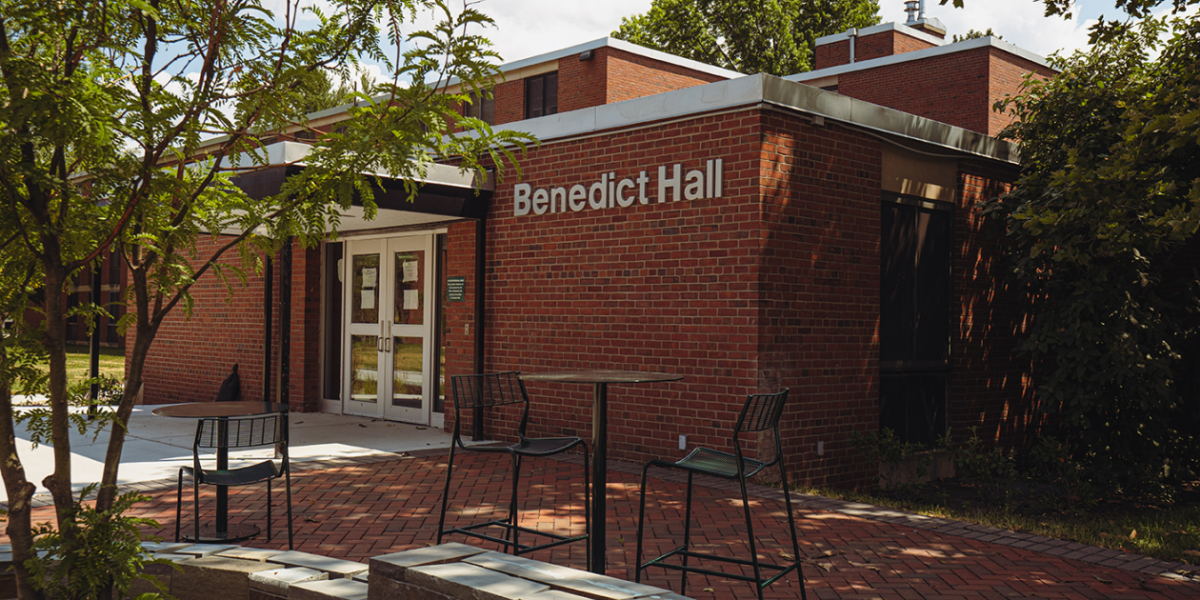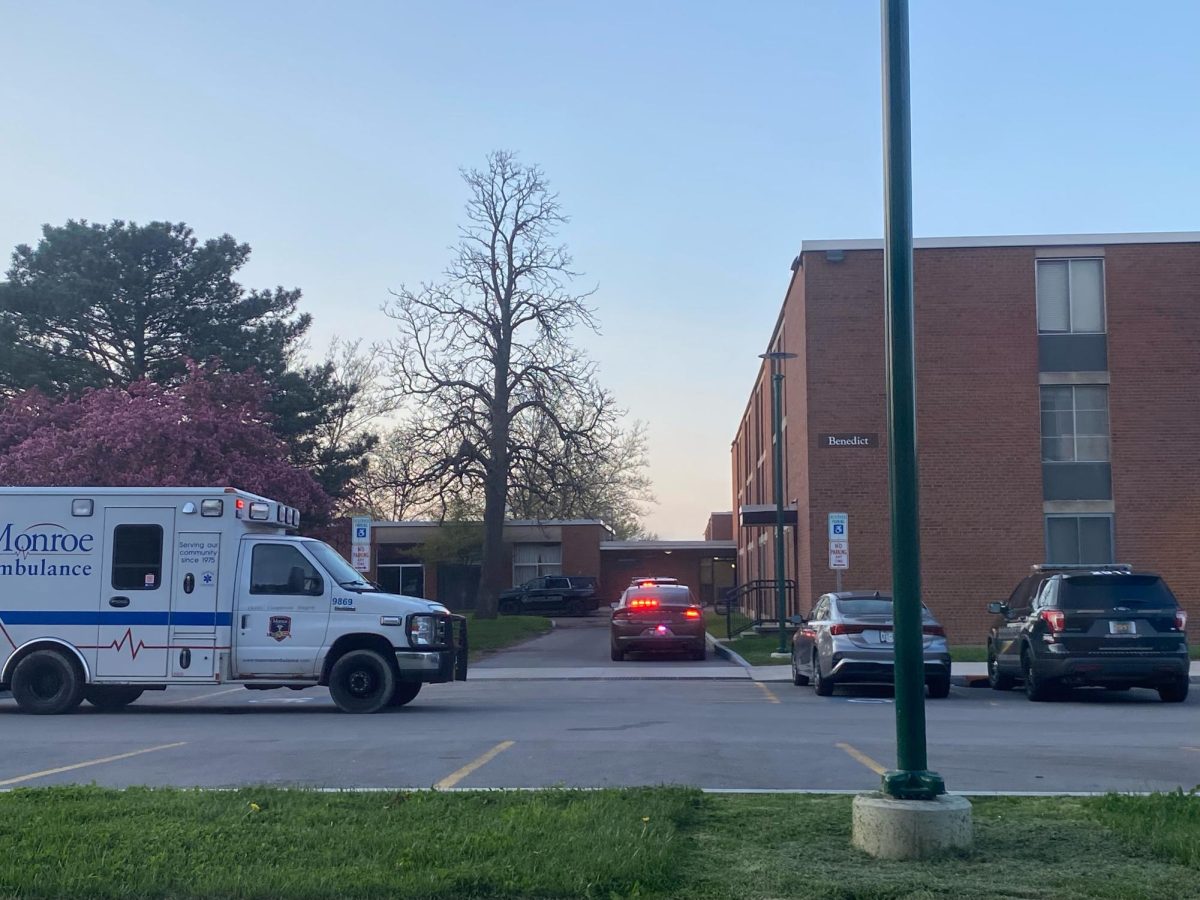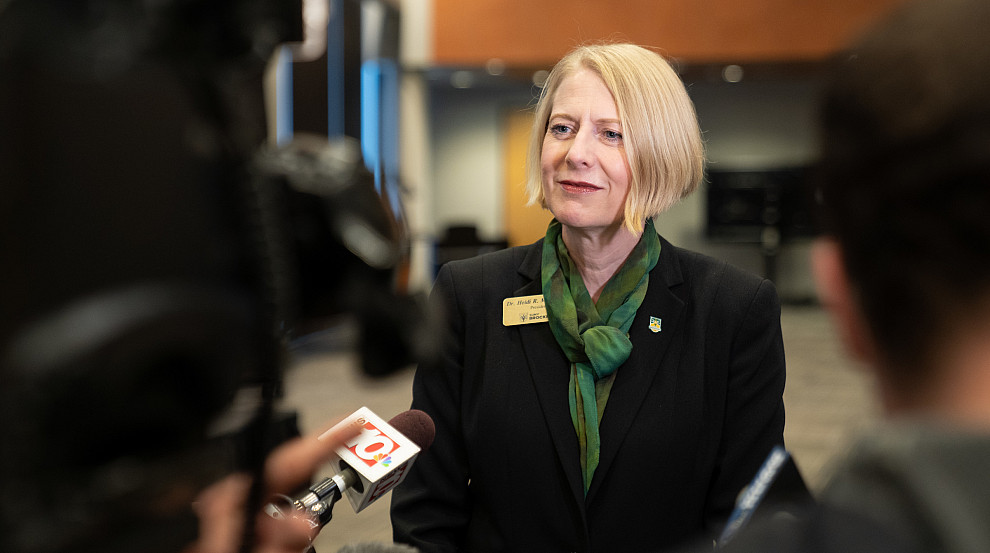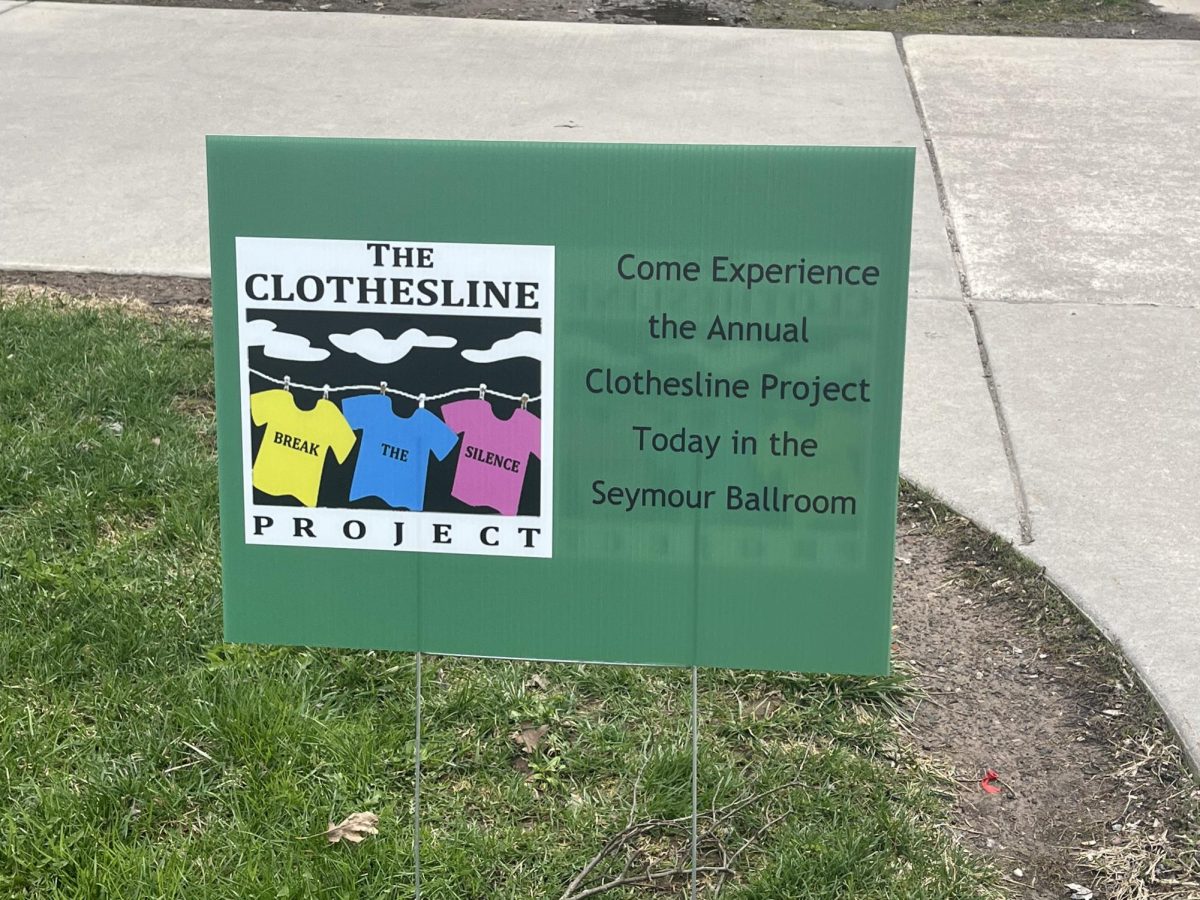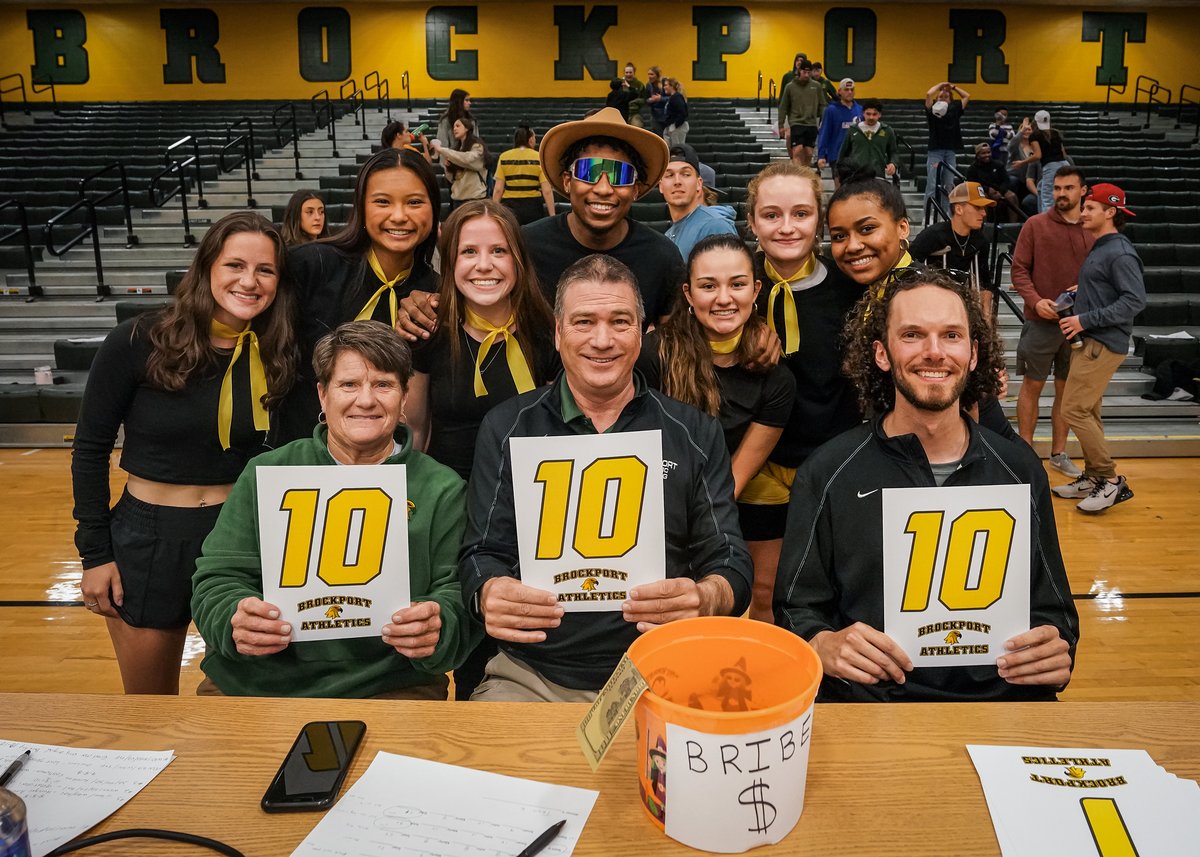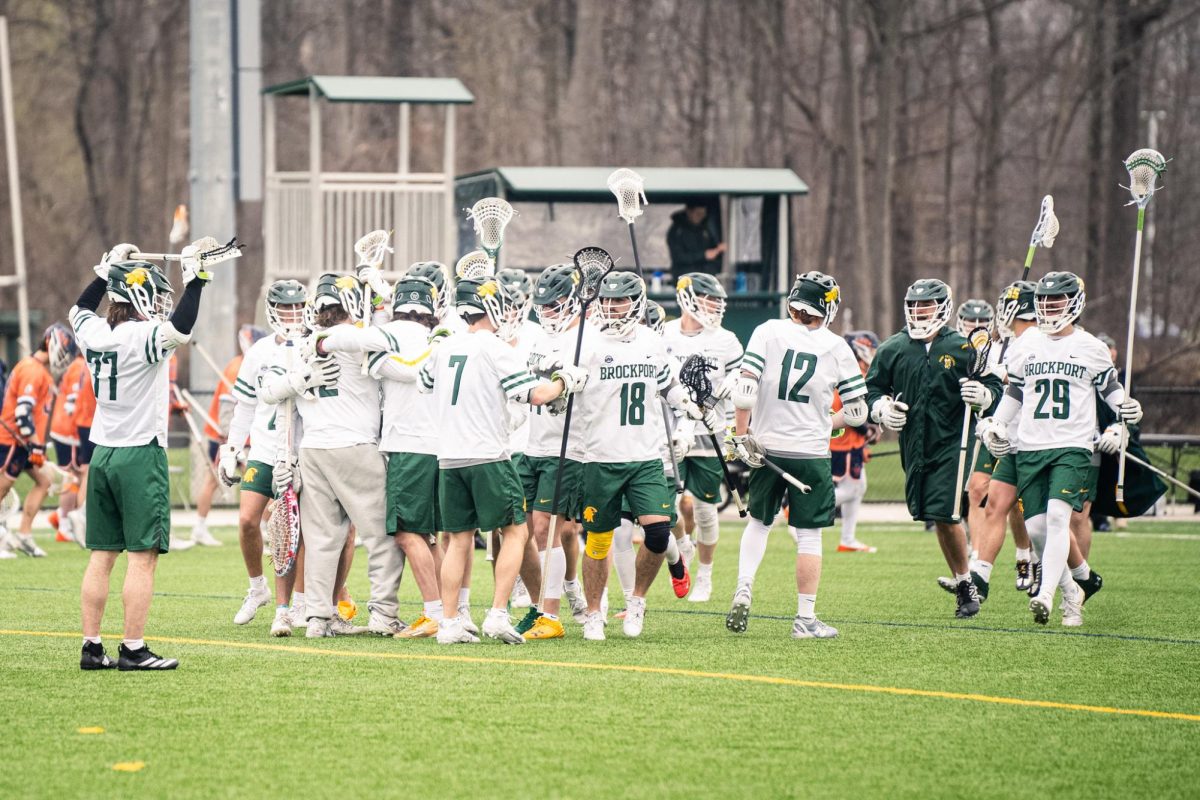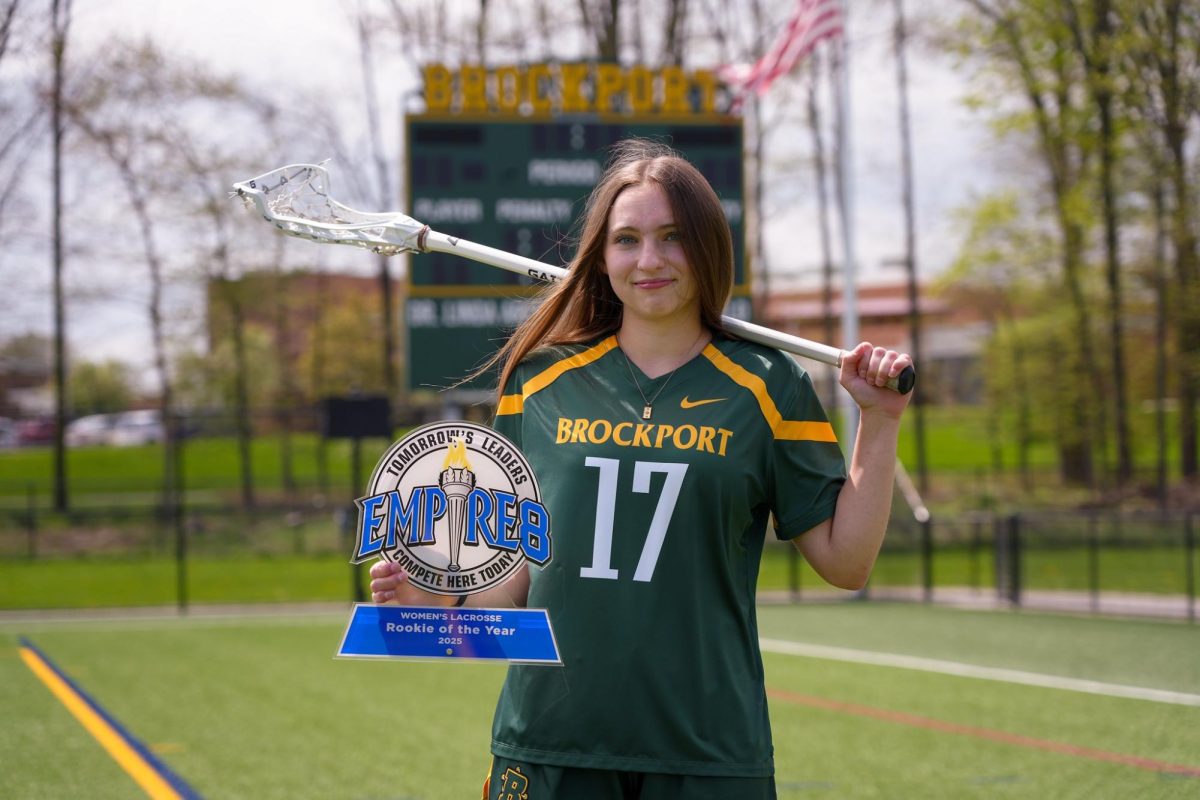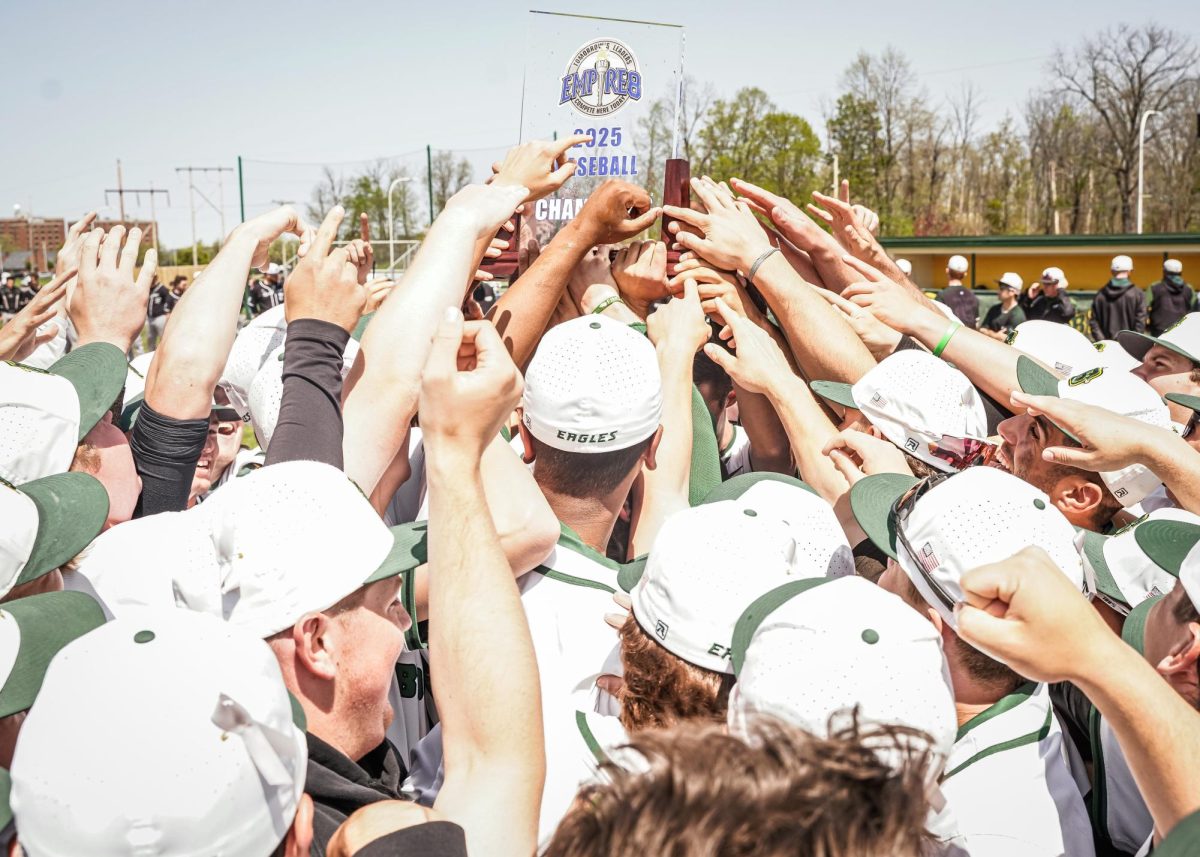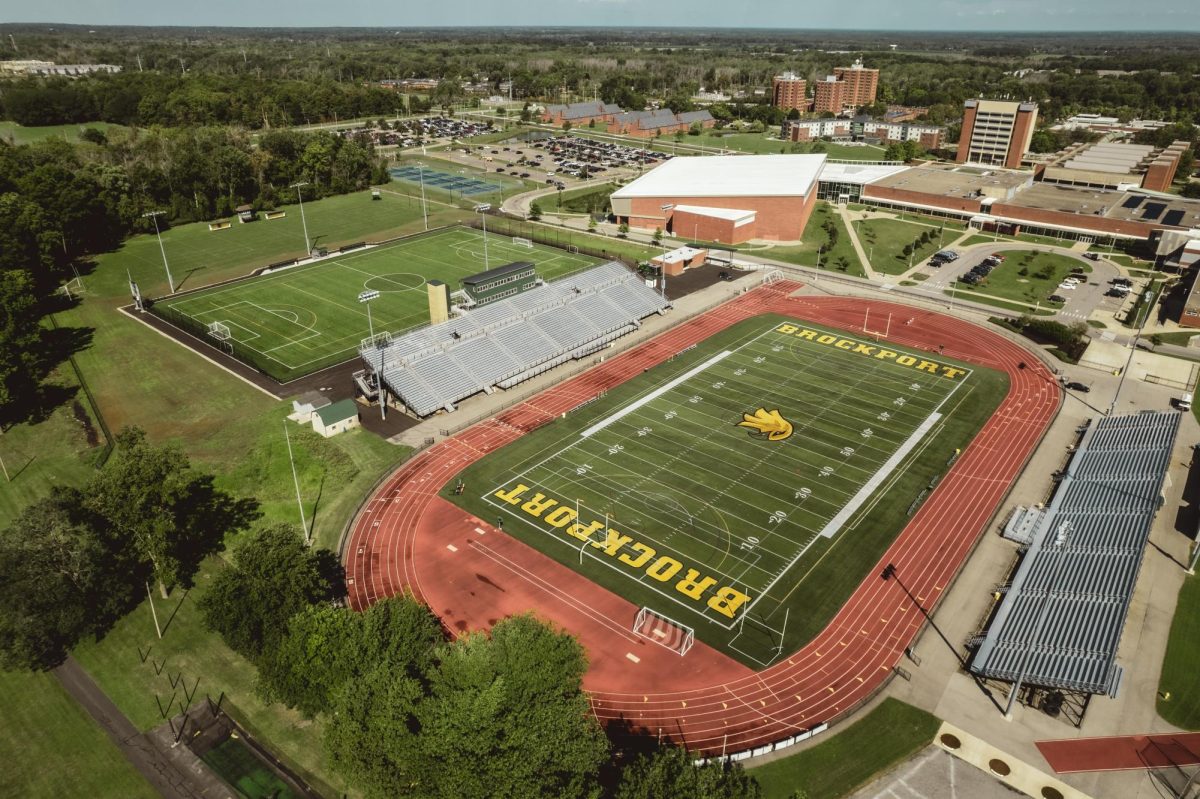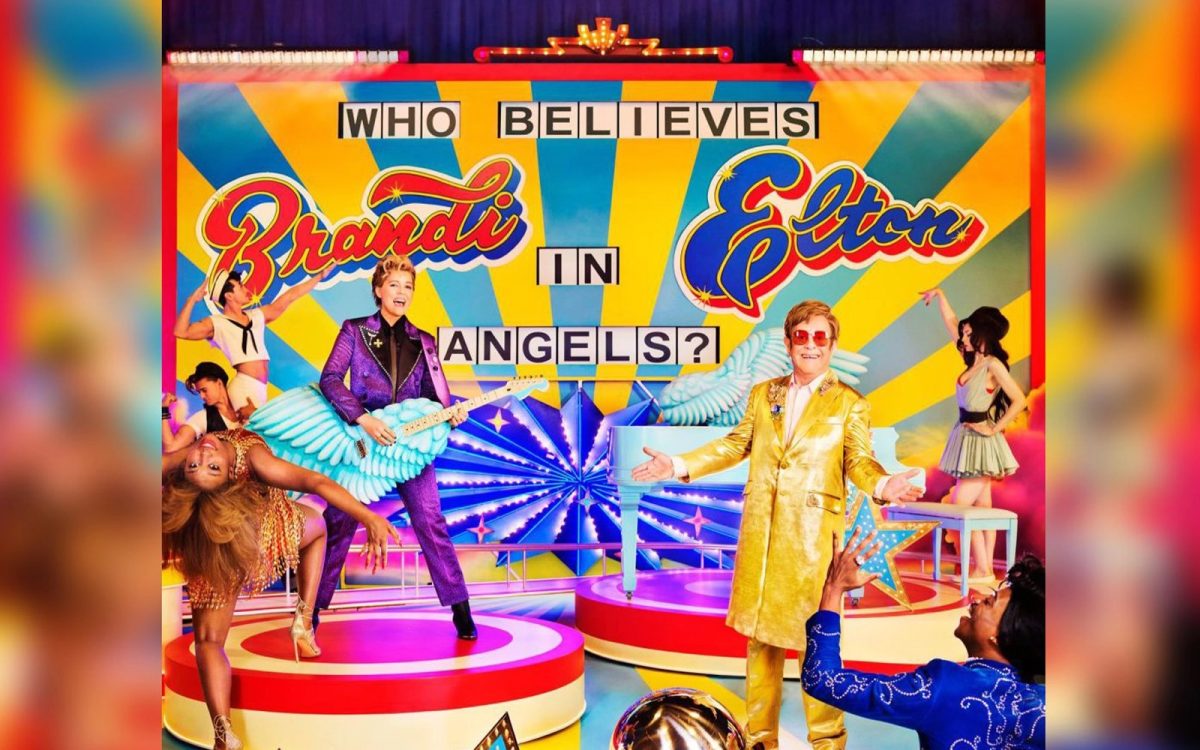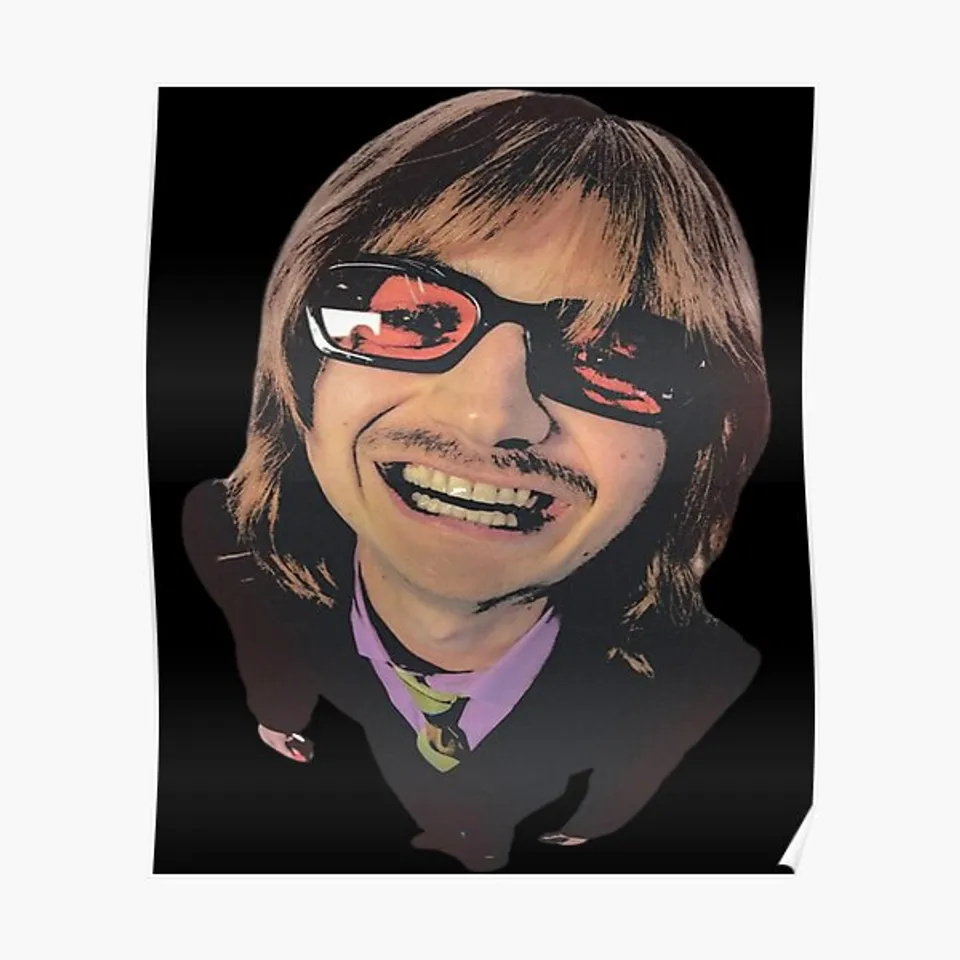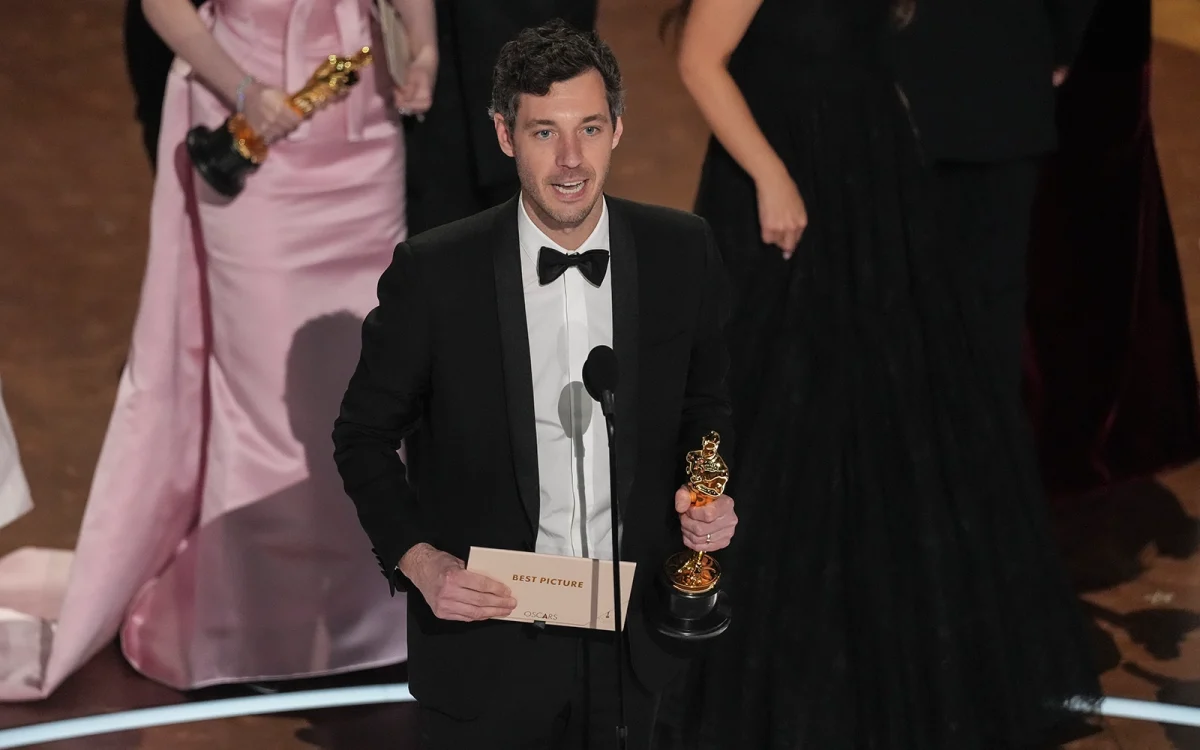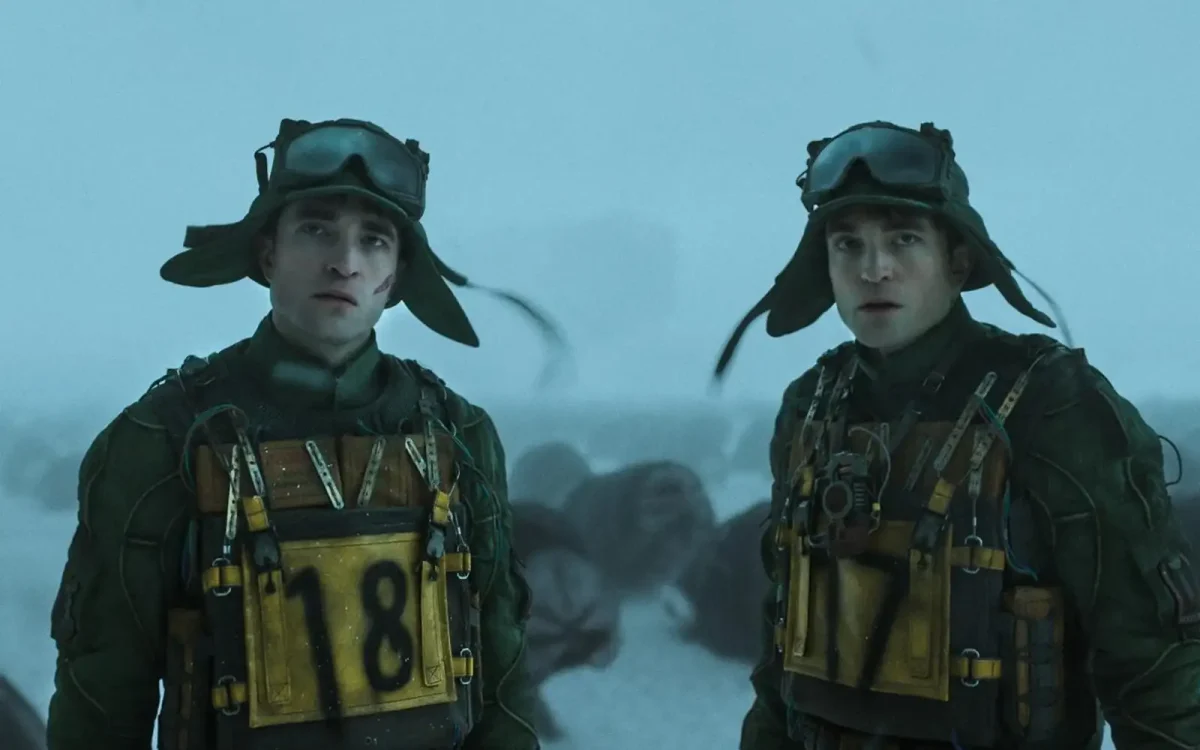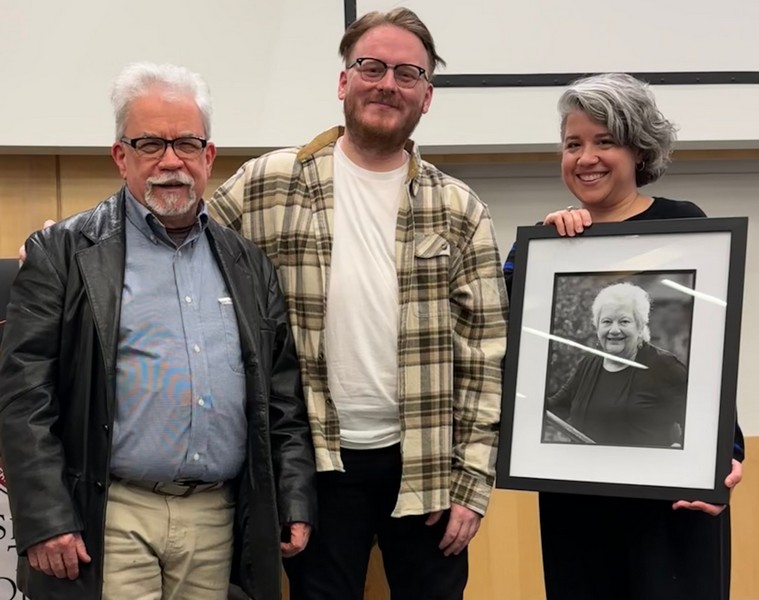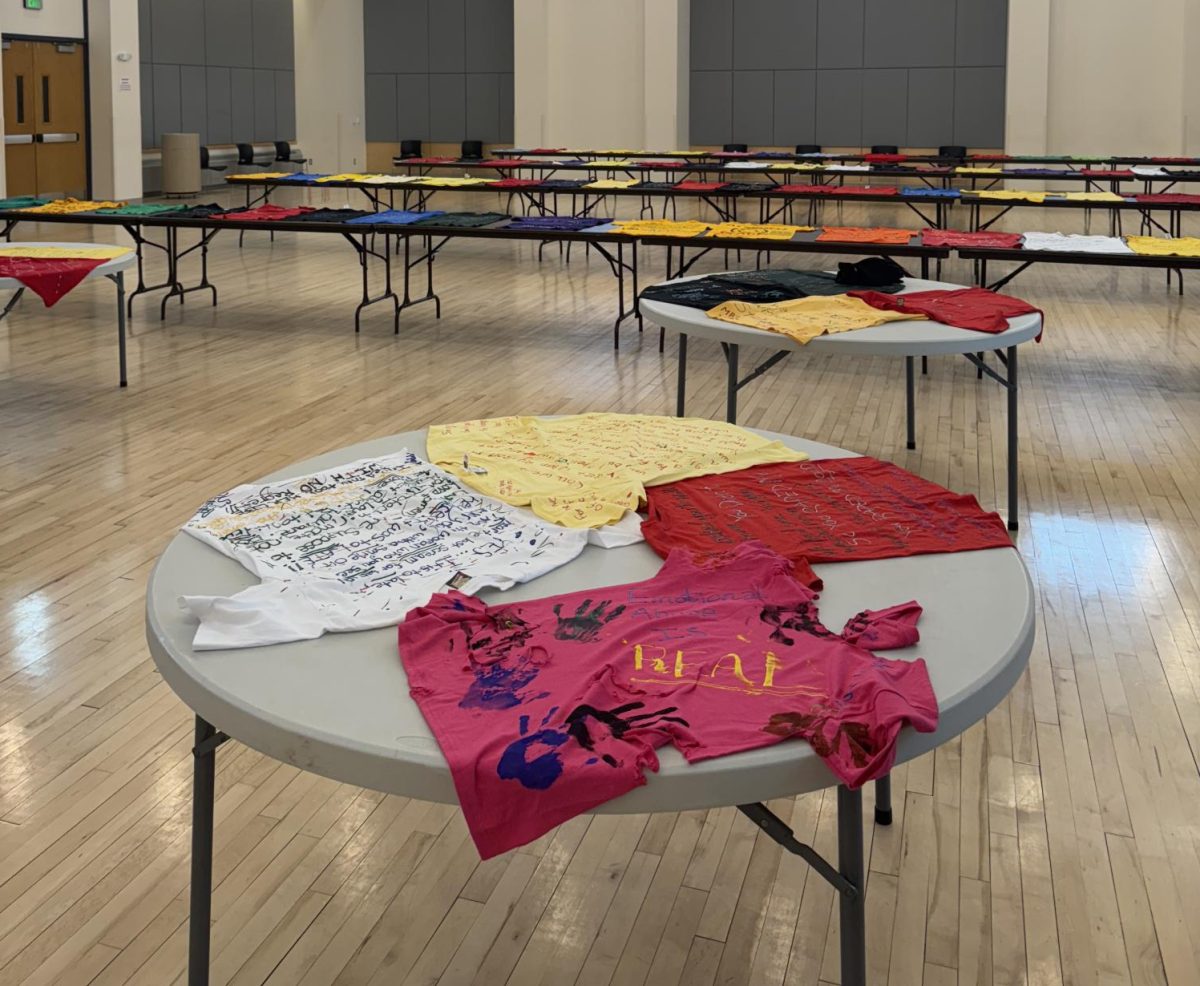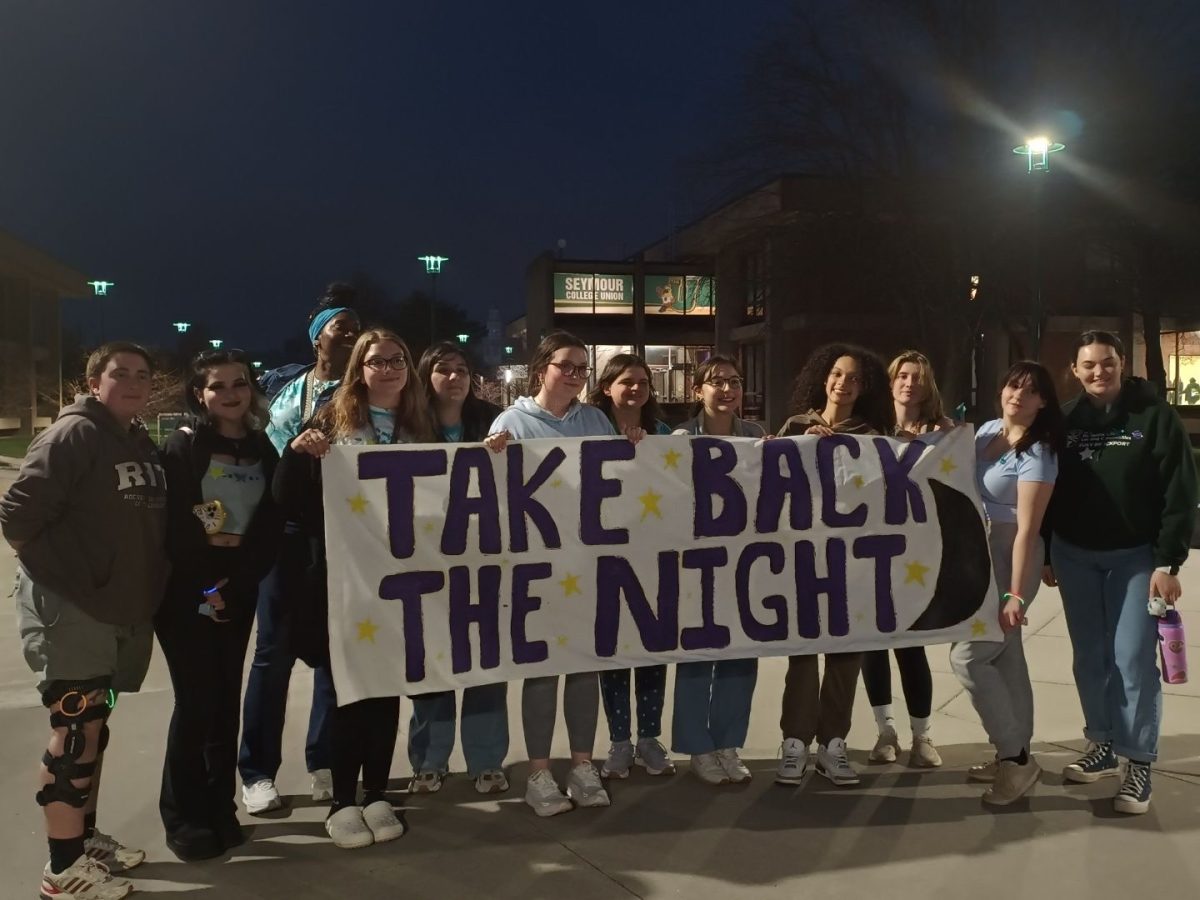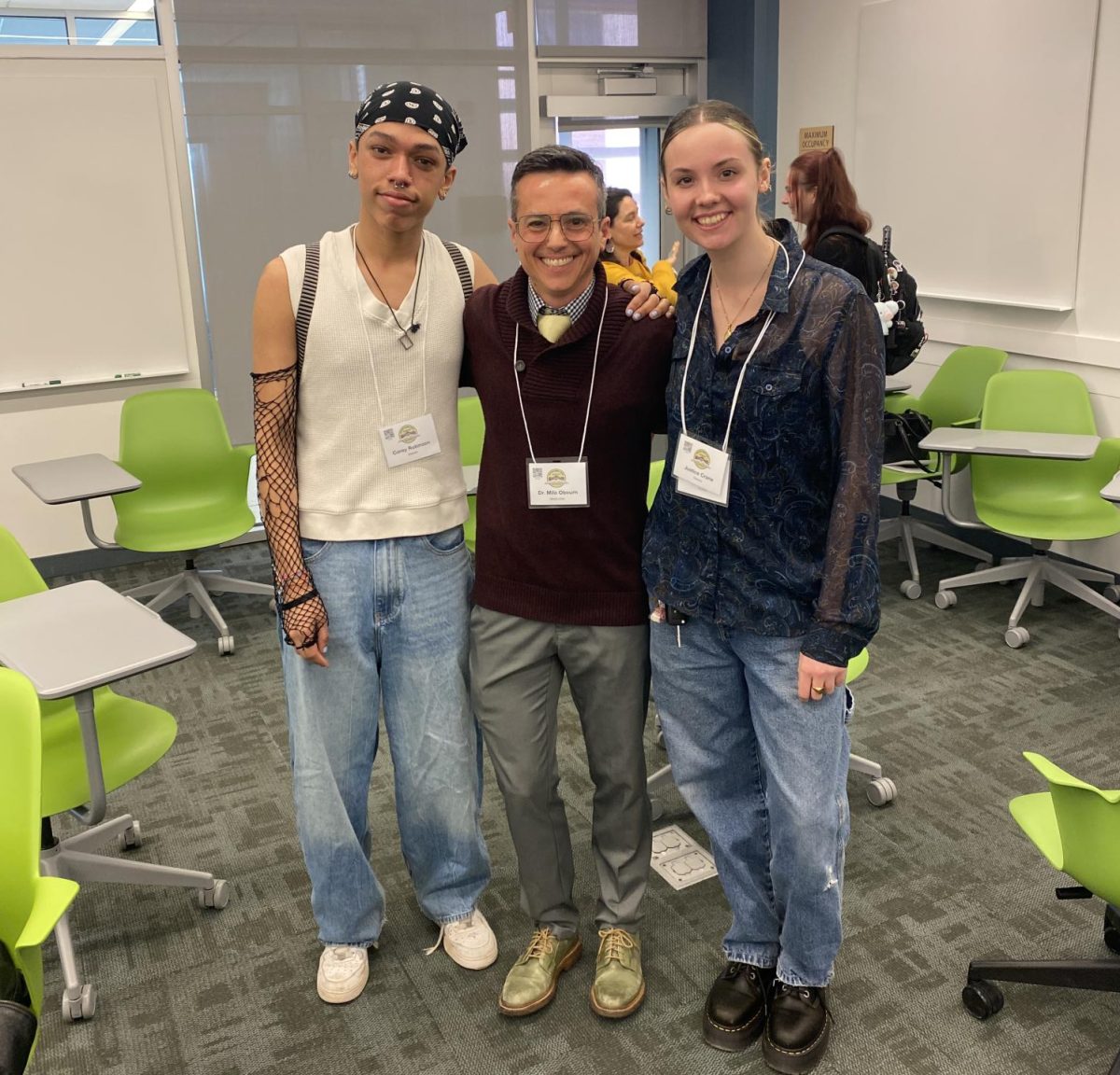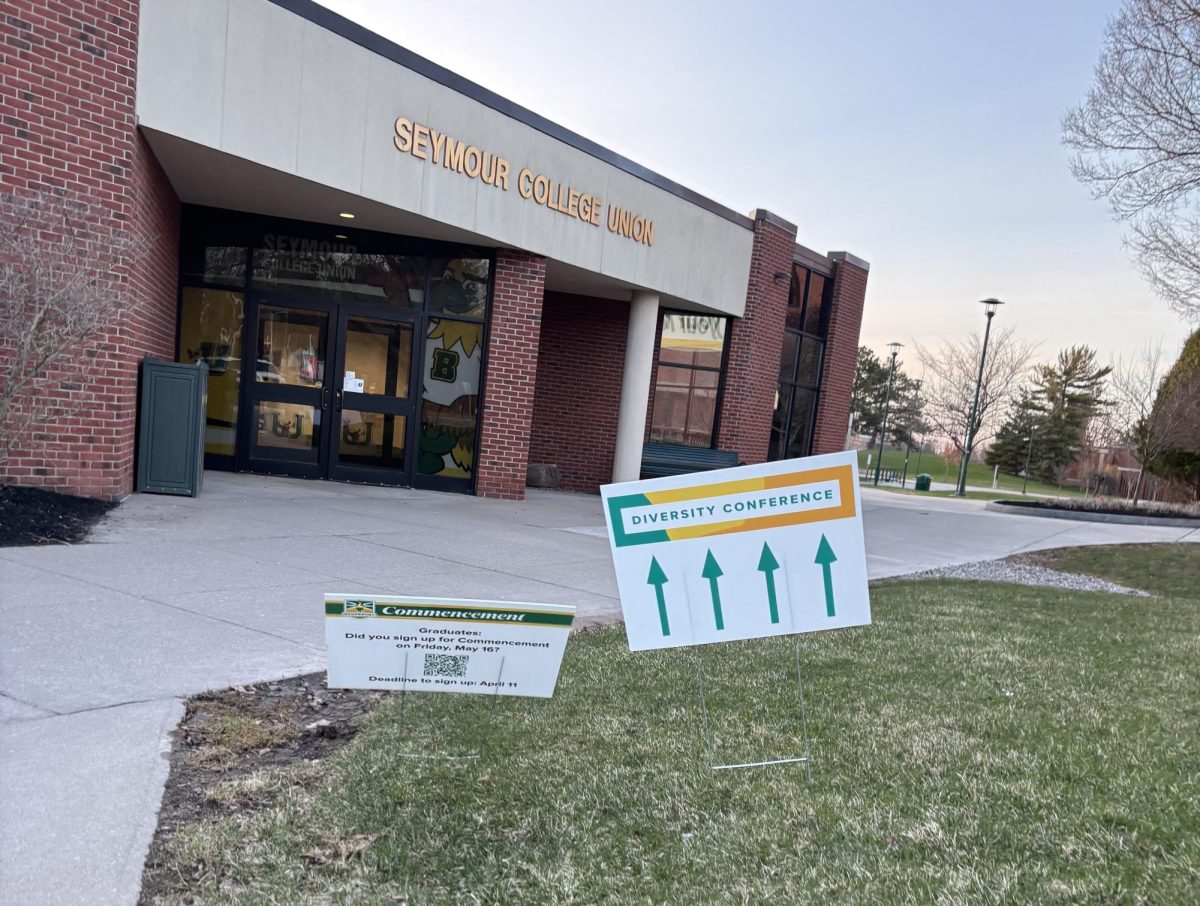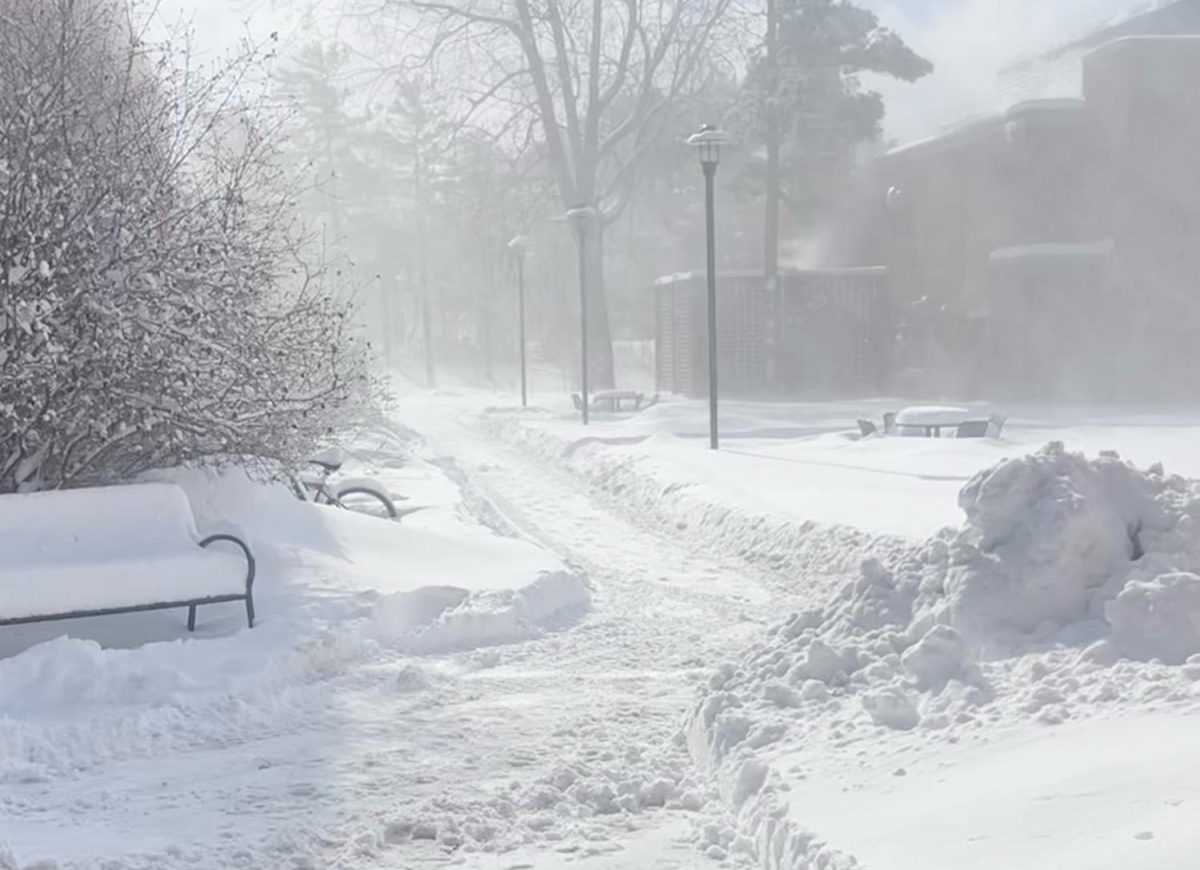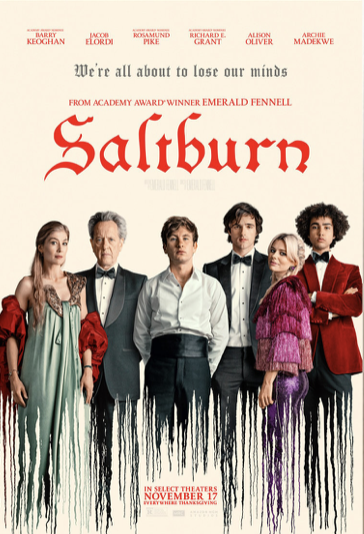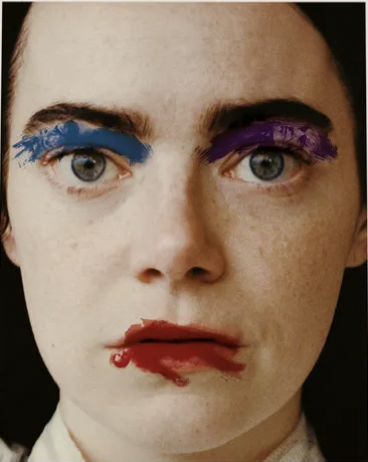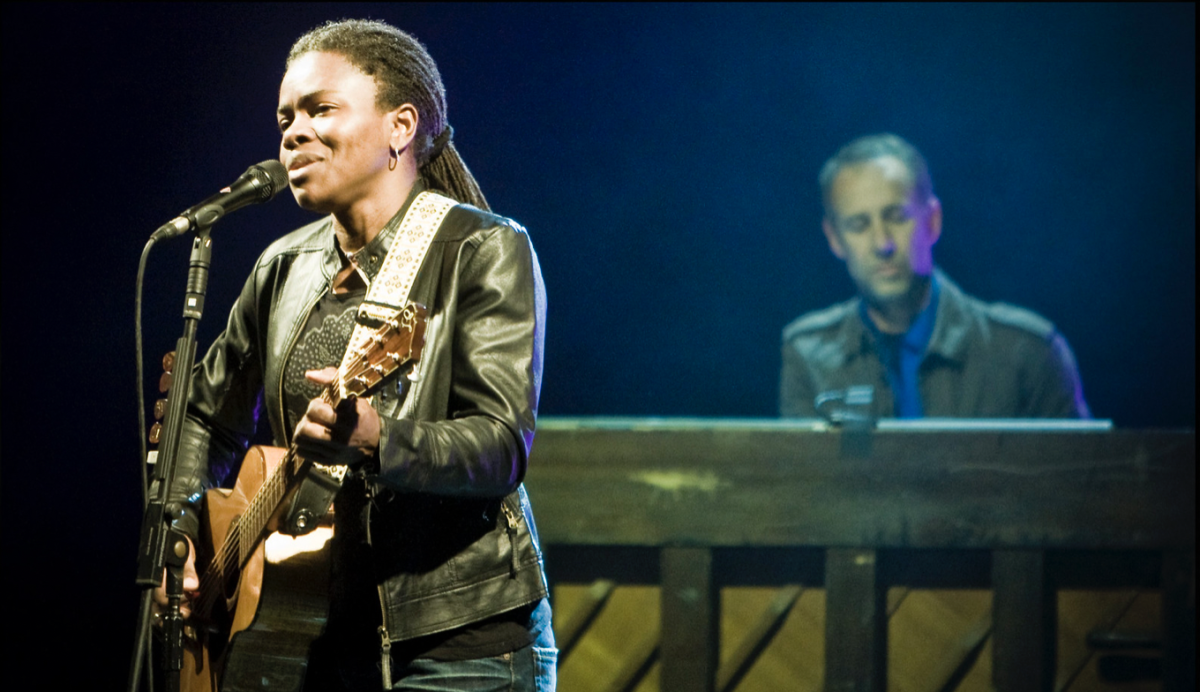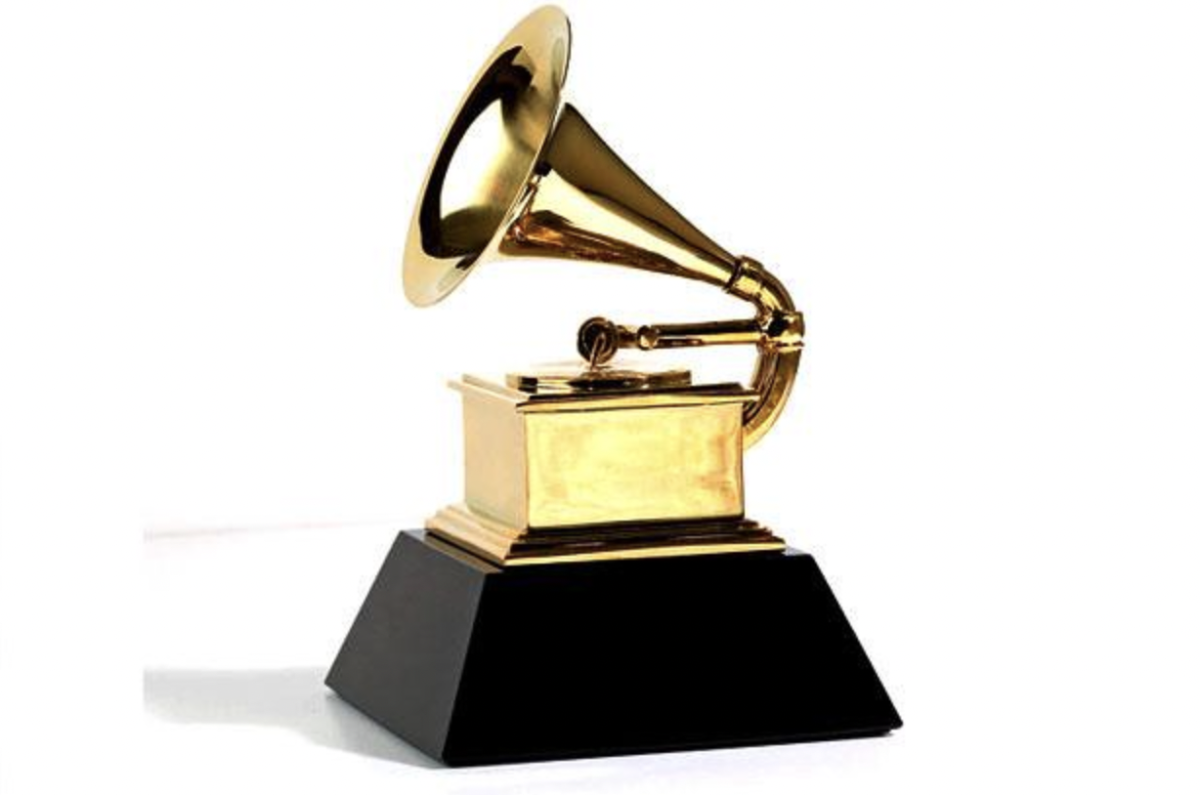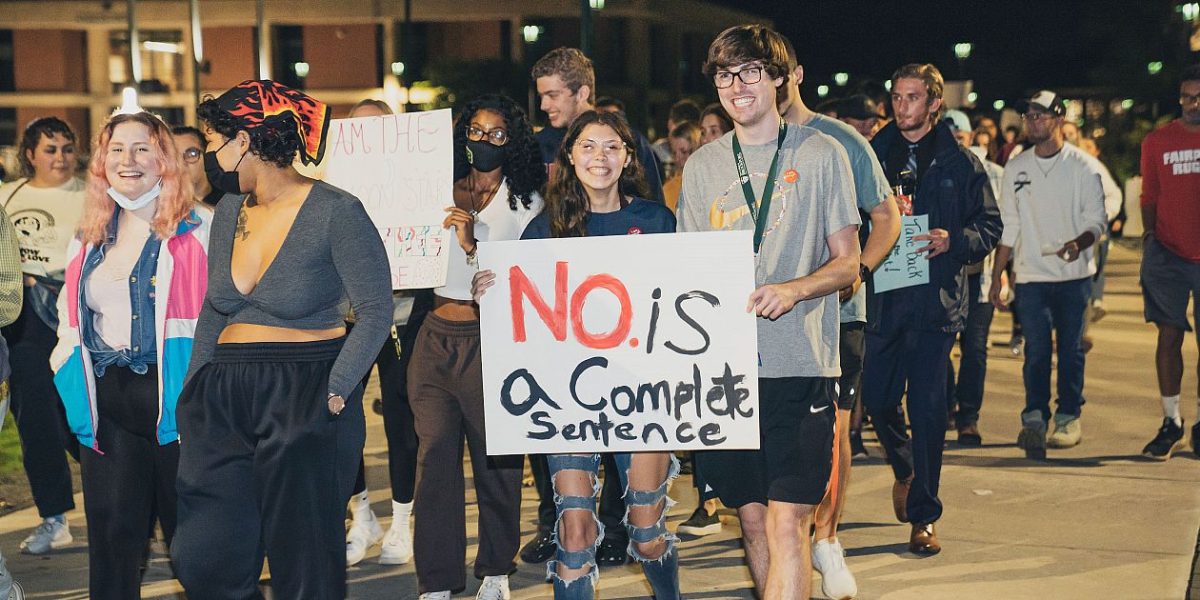
Dr. Bek Orr (pictured top/left) gave a virtual presentation on the Lesbian Herstory Archives.
In 1974 a group of lesbians founded the Lesbian Herstory Archives to help give future generations a history of what it was like to be queer in the past. To help educate people who don’t know of the Archives Dr. Bek Orr presented a guest lecture for the University of Colorado.
The lecture was open to anyone who was interested, they just needed to RSVP to the lecture. Orr opened by telling their listeners to envision what an archive looks like.

Women hold a banner that reads “Lesbian Herstory Archives” at a 2012 Pride Parade in NYC to help promote their “Herstory.”
“Picture a big large room that looks like it’s sort of never ending goes back into forever and it’s popped from floor to ceiling with archival boxes,” Orr said. “So an archive is a space a repository for historical documents and items that are being preserved in those historical documents and items, particularly, you know, are pertained to a person, a particular place, a group of people. And when we think about a traditional archive, we tend to think about, you know, what I’m presenting here before you this really kind of cold and sterile environment. Not super welcoming, not super accessible, hyper organized, really a pretty uninviting and unsexy place.”
Orr joked about how they usually feel like they have to talk “super fast” when speaking about archives because they are afraid people would fall asleep, or become bored easily.
“We tend to think of archives as pretty unsexy places unless you are super into organization like me, and then it’s like a little bit sexy, but that’s neither here nor there,” Orr said. “I want to talk to you about a sexy archive, right making the archive sexy querying the archive and, and that’s what we’re gonna look at today. So, let me introduce you with great pleasure to the lesbian herstory archives.”
Orr explained that the Lesbian Herstory Archive is the largest lesbian archive in the world and it was a response to an argument that lesbians were ignored and not just in the women’s movement or gay rights movement, but according to Orr, were invisible in general.
“When they were visible, they were de-sexualized or hyper-hetero sexualized,” Orr said. “And so coming together, they decided they wanted to make a space for archiving lesbian lives in a community center of sorts for lesbians. So the first lesbian herstory archives newsletter was published in 1975.”
The letter outlined what the Lesbian Herstory Archive was for, and how women were able to view it. The main purpose of the Archive was to preserve records of the lives of lesbians so that future generations will have material that is relevant to their lives and feelings.
Orr included in their presentation a picture of one of the founding members of the Lesbian Herestory Archives, Joan Nestle. Orr explained that Nestle kept the first adaptation of the Lesbian Herstory Archives in her Manhatten apartment, but for the first few years the Archives were very contained.

Joan Nestle, one of the founders of the Lesbian Herstory Archives.
“When I say contained, I mean barely so in the beginnings, it was a small collection,” Orr said. “But as the lesbian herstory archives became more well known as different lesbian feminist periodicals wrote about it. More and more people became invested and started to send their materials in. It was seen as one of the only places where you could find any information about lesbians, lesbian lives, lesbian organizations resources for lesbians.”
Orr said that the Archives later found a home in Brooklyn, and last year it celebrated 45 years of being in one spot. Orr jumped topics to discus what they meant by “queering” the archives.
“Ultimately, what makes an archive queer is not just its contents thread, it’s not just the lives that it documents, for example, the Lesbian Herstory Archives seeks to document lesbian lives,” Orr explained. “But I would argue that what makes an archive queer is also how it documents those lives, right, the ways in which those lives are documented. And the lesbian herstory archives makes a really great case for querying, messing with pushing up against tradition in the sense of what an archive can be, what it should be, and how it should sort of function and operate.”
Orr gave examples of how they found the Lesbian Herstory Archives to queer traditional archives.
“The archives, the Lesbian Herstory Archives uses what they call radical archiving practices,” Orr said. “So this runs the gamut, everything from it being a space that is totally volunteer run, they receive no public funding, no public monies, all of their support comes from the community. They also have really strict sort of commitments to the archives never being subsumed by an institution, it always being housed, run and owned by the lesbian community.”
Because the Lesbian Herstory Archives are soley volunteer, many of the archivist were self taught early on. Orr said a young lesbian would come in as a volunteer, learning the ropes and would later pass it on to the next young face to walk through the door.
The Archive is also run by a non-hierarchical structure, there is no one person in charge of everything, according to Orr. It operates on a committee based structure but all decision regarding the archive are made by consensus.
“A really important point here is that the Lesbian Herstory Archives is not set up to be efficient. Efficiency and bureaucracy, which are two very important things to most traditional institutional archives are not only not important to the lesbian herstory archives, but a lot of times, they’re straight up avoided. So the idea that you might walk into an archives, you might call ahead and say, “this is what I’m looking for, I looked through the finding aids, I want to see this and this and this folder, or this document in this document,” and you would go in and you would quickly interact with those documents, and then you will leave that does not have lesbian herstory archives.”
Orr explained that unlike traditional archives, the setup encouraged full engagement from those who are searching for a certain document in the Lesbian Herstory Archive. It requires someone to actually go and physically find what they are looking for — dust off a box and flip through pages until they find what they are looking for — not just hit search on a computer.

